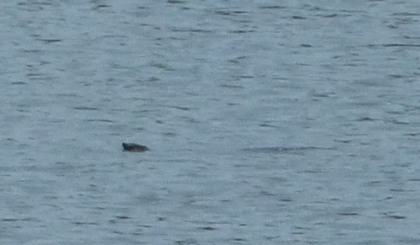New individual of world's rarest turtle found in Hanoi
ABO/NDO – An additional individual of the Swinhoe's Softshell Turtle (Rafetus swinhoei), the world’s most endangered turtle species, has been found at Xuan Khanh Lake on the outskirts of Hanoi, thanks to the efforts from the Asian Turtle Programme (ATP) of Indo-Myanmar Conservation (IMC), a UK based conservation charity.
 |
| A photo of the Xuan Khanh Turtle taken in May 2017, but a clear identification could not be made. (Photo: ATP/IMC) |
The finding helps to raise the number of these turtles living around the world to four and opens up the opportunity for breeding one of the world’s rarest animals.
In January 2016 a large male Swinhoe’s Softshell Turtle that had lived in Hanoi's Hoan Kiem Lake passed away. This ancient animal was the last surviving individual of the species in the lake and was possibly over 100 years old.
Now believed to be almost extinct in the wild, as of 2016 only three animals were known globally, two are being kept in Suzhou Zoo in China, a female and ancient male who have been together since 2008, but despite successful nesting all of their eggs have been infertile. Meanwhile a single wild animal was found in 2007 by the ATP that resides in Dong Mo Lake west of Hanoi.
Since 2003, the ATP has conducted surveys throughout a lot of northern Vietnam covering 18 provinces looking at the lakes, wetlands, and rivers that were once home to the species. These impressive animals were once found throughout much of the Red River Delta but the large softshell turtles, which can grow to over 150kg in size, were heavily hunted in the 1970's and 1980's, and in its last strongholds until the 1990s.
Though the surveys have identified numerous sites where the species historically used to survive, in most of the sites, accounts of hunting are old and it’s likely that the species is now locally extinct in many areas.
This finding brings new hope, with the possibility of bringing wild animals together in a controlled environment for captive breeding. However, the conservation and future of this, the world’s rarest turtle species, is far from guaranteed, a great deal of effort is now needed to protect these known animals and ensure they are able to breed, this will mean bringing them together in a single location. The ATP/IMC still has almost a dozen historical sites for which we want to invest more time in monitoring and will hopefully use eDNA to help to confirm more animals.
(Source: NDO)
 về đầu trang
về đầu trang







